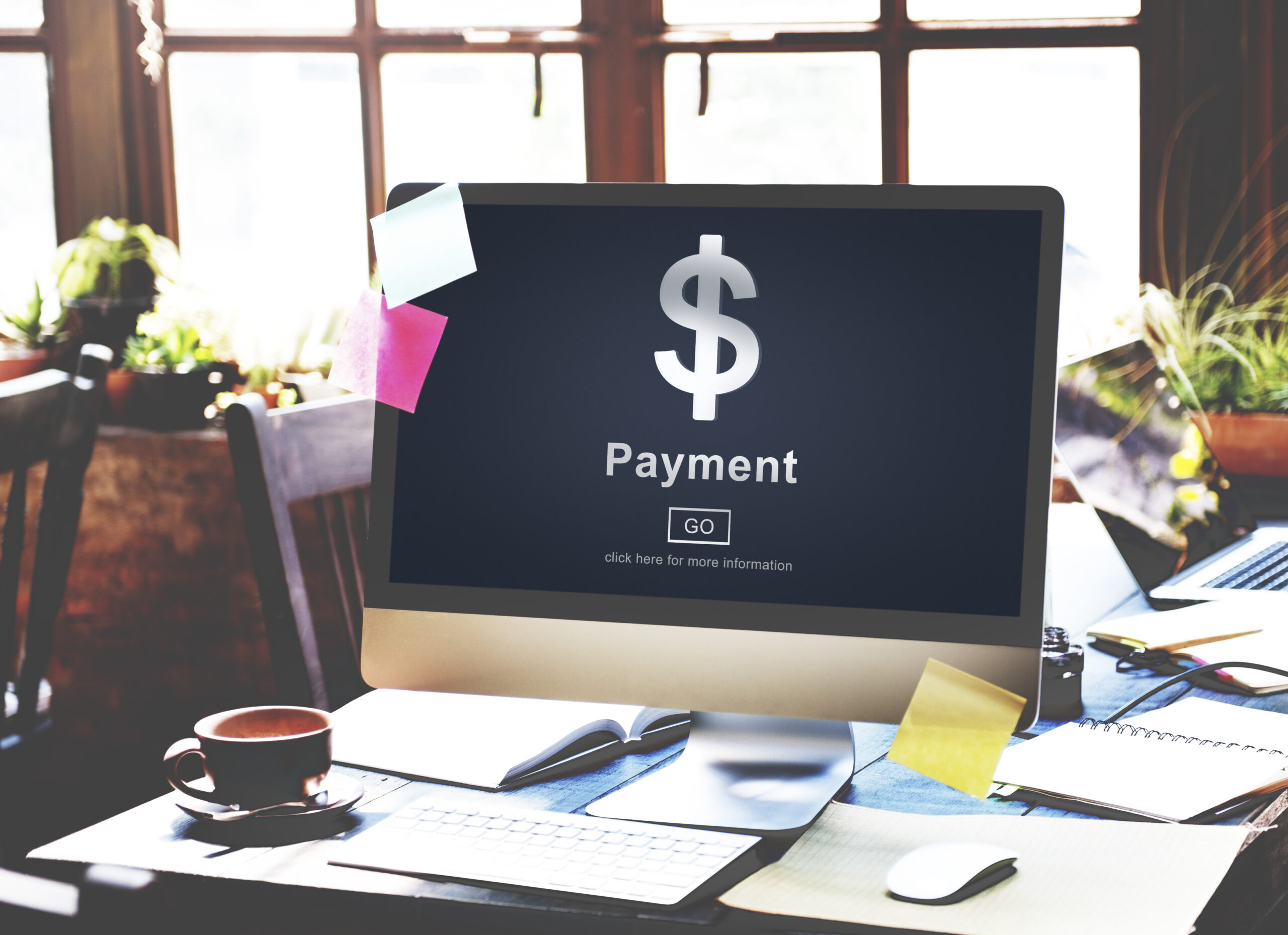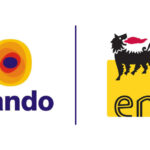FINTECH
THE ROLE OF BLOCKCHAIN IN SECURE PAYMENT INFRASTRUCTURE

THE ROLE OF BLOCKCHAIN IN SECURE PAYMENT INFRASTRUCTURE
INTRODUCTION
Due to its potential to transform numerous industries, blockchain technology has experienced tremendous growth in popularity in recent years. It has demonstrated considerable potential in a number of areas, including secure payment infrastructure. Blockchain, which is renowned for its immutability, decentralization, and transparency, offers a number of benefits that improve the security of payment systems. In this article, we’ll talk about how blockchain overcomes the flaws in conventional systems and how it helps to ensure a safe payment infrastructure.
AN OVERVIEW OF THE BLOCKCHAIN INDUSTRY
A decentralized and distributed ledger that records data transactions across numerous computers or nodes is what is meant by the term “blockchain.” It is intended to be tamper-proof, transparent, and secure. A chronological chain of blocks, each carrying a transaction record, may be created and maintained thanks to blockchain technology, listing of confirmed transactions.
In contrast to conventional systems, which store data on a central server, the blockchain runs on a network of computers called nodes. Together, these nodes support and verify the blockchain. A decentralized structure makes sure that no one organization owns or controls the entire network.

THE ROLE OF BLOCKCHAIN IN SECURE PAYMENT INFRASTRUCTURE
The blockchain is made up of a number of blocks, each of which contains a number of data transactions. For instance, a block on a blockchain for a cryptocurrency like Bitcoin can include details about the sender, recipient, and value of each transaction. Each block has a special identifier known as a hash. A cryptographic hash function is used to generate a fixed-length alphanumeric code known as a hash. It is practically hard to change a block’s contents without also changing its hash since the hash acts as a digital fingerprint of the block, preserving its integrity.
To create a chain, the blocks are connected in a specified order. A safe and sequential relationship between the blocks is created since each block carries the hash of the one before it. Any attempt to alter one block would require altering all following blocks as a result of this relationship, making it both exceedingly impracticable and clearly detected.
Consensus methods are used by blockchain to verify and confirm transactions. Proof of Work (PoW), a mechanism utilized in Bitcoin, is one that is well-known. Miners use Proof-of-Work (PoW) to validate transactions and add them to the blockchain by solving challenging mathematical puzzles. This distributed validation procedure makes certain that Transactions are legal and keep money from being spent twice.
Blockchain is transparent, thus every member of a network can see the complete history of all transactions as well as the blockchain’s current condition. Without the need of middlemen, this transparency promotes participant trust and helps avoid fraud.
Blockchains use sophisticated cryptography techniques to guarantee data security. Private keys are used to digitally sign transactions, while nodes use corresponding public keys to validate the signatures. Additionally, because the data is replicated throughout the whole network thanks to blockchain’s decentralized nature, it is resistant to attacks or failures on any individual node.
The ability to perform smart contracts—self-executing contracts—is available on some blockchains, including Ethereum. These contracts have established rules and conditions built into them, ensuring automatic and precise implementation without the need for human intervention. intermediaries are required.
In addition to cryptocurrencies, blockchain technology offers a transparent, decentralized, and secure mechanism to record and verify a variety of transactions. By lowering costs, boosting efficiency, and fostering greater participant trust, it has the potential to change a number of industries, including finance, supply chain management, healthcare, and more.
THE ROLE OF BLOCK CHAIN IN SECURING PAYEMENT INFRASTRUCTURE.
By bringing transparency, immutability, and decentralization to the secure payment infrastructure, blockchain technology has the potential to change it. The following are some crucial functions that blockchain plays in protecting payment infrastructure:
- Transparency and Trust: Blockchain offers a decentralized ledger where each transaction is recorded and can be confirmed by all parties. Due to the ability of parties to independently confirm the legitimacy and integrity of each transaction, this openness ensures trust in the payment infrastructure. With Blockchain does away with middlemen and gives consumers direct control over the veracity of their transactions, in contrast to traditional payment systems where trust is placed in a centralized authority, such as a bank.
- Tamper-proof and Immutable Records: Once a financial transaction is included in the blockchain, it becomes tamper-proof and immutable. Due to the decentralized structure of blockchain, it is very challenging for hackers or other bad actors to manipulate payments because no single entity has the authority to change transaction records. Users benefit from an additional layer of security provided by this immutability, which gives them peace of mind knowing that their payments are safe and cannot be altered.
- Decentralization: Traditional payment systems rely primarily on centralized middlemen, which can be a single point of failure and are susceptible to hackers. Blockchain, on the other hand, runs on a distributed computer network or node in which consensus and transaction validation are carried out independently. Blockchain greatly lowers the chance of a single point of failure by doing away with the central authority and raises the overall security of the payment infrastructure.
- Increased Security: To protect financial transactions, blockchain technology makes use of cutting-edge cryptographic methods. The digital signature of each transaction makes sure that only parties with permission can start and validate payments. Additionally, to avoid double-spending and guarantee the accuracy of the transaction history, blockchain networks employ consensus procedures like proof-of-work or proof-of-stake. Hackers are almost unable to influence transactions or engage in fraudulent behavior because of these security features.
- Smart Contracts: Smart contracts, which are self-executing contracts defined in code, can be integrated with blockchain. Sensible contracts Once predetermined conditions are met, automatically enforce payment terms and complete transactions. This automation creates a more secure payment environment by lowering the possibility of human error and getting rid of pointless middlemen. In order to further improve the security of payment transactions, smart contracts also provide extra security features including escrow services, multi-signature authorization, and time-locks.
- Cross-Border Payments: With blockchain, cross-border payments might be streamlined and secured. Traditional international trade can be expensive, time-consuming, and complicated. Cross-border payments can be carried out directly between parties via blockchain, eliminating the need for middlemen. Delays are removed, and transaction costs are decreased. Additionally, enhanced traceability of cross-border payments made possible by blockchain’s transparent and auditable nature lowers the danger of money laundering and other illegal acts.
- Enhanced Efficiency: Blockchain technology does away with the necessity for middlemen in the payment process. Payment-related operations like verification, settlement, and reconciliation can be automated using smart contracts, which are self-executing contracts with predetermined criteria programmed into the blockchain. By doing this, processing time and expenses related to conventional payment methods are decreased.
- Global Reach: Blockchain-based payment infrastructure makes it possible to send money across borders without the use of middlemen or conventional banking institutions. Blockchain enables users to send and receive payments quicker and more cheaply than with traditional methods by utilizing cryptocurrencies or stablecoins.
- Greater Privacy: While blockchain offers transparency, it also lets users keep their personal information private. Users can transact using fictitious names or distinct digital signatures to protect their privacy instead of immediately disclosing sensitive payment information. personal information.
- Preventing Fraud: Blockchain technology has the ability to identify and stop fraudulent activity during payment procedures. All transactions will be permanently recorded, enabling any unlawful or questionable activity to be swiftly discovered and dealt with in real time.
THE FUTURE OF BLOCKCHAIN
Blockchain technology appears to have a bright future in protecting payment infrastructure. Here are some prospective trends and developments:
- Wider Adoption: As more businesses and organizations come to understand the advantages of blockchain, we can anticipate seeing this technology used more frequently to secure payment infrastructure. This encompasses both new and growing fintech businesses as well as conventional financial institutions.
- Interoperability: At the moment, several blockchain networks run autonomously, restricting their capacity to resolutely communicate with one another. Future efforts will probably be made to develop interoperability protocols or standards that enable interaction and exchange of value between various blockchain platforms. This would make cross-border payments easier and more effective.
- Scalability: Many blockchain networks continue to struggle with scalability, particularly when it comes to managing high transaction volumes. Ongoing research and development initiatives, however, are concentrated on enhancing scalability using strategies like sharding, off-chain transactions, and layer 2 solutions. It will be simpler to integrate blockchain into the current payment infrastructure without sacrificing speed and efficiency as these scalability solutions develop.
- Improvements To Privacy: Although blockchain transactions are secure and transparent, privacy can be an issue in some use cases. Future developments could put a higher priority on privacy protections, enabling the selective disclosure of transaction information or the usage of cryptography methods that prioritize privacy. This would take care of the requirement for privacy in payment transactions, especially in business and financial applications.
- Central Bank Digital Currencies (Cbdcs): Authorities are considering creating their own digital currency, also known as CBDCs. Blockchain technology offers a safe and transparent infrastructure for creating and maintaining digital currencies, making it ideal for various implementations. CBDCs have the ability to reshape the payment infrastructure, resulting in more rapid, effective, and inclusive transactions.
- Integration With New Technologies: The Internet of Things (IoT), artificial intelligence (AI), and smart contracts are a few examples of emerging technologies that blockchain can work in conjunction with. Automated and safe transactions can be made possible by IoT device integration, while blockchain networks’ fraud detection and prevention can be improved by AI algorithms. Using smart contracts, you eliminating the need for manual involvement, payment settlements, and the enforcement of specified restrictions.
With improvements in scalability, interoperability, privacy, and connection with other technologies, the use of blockchain to secure payment infrastructure appears to have a bright future. We can anticipate blockchain to significantly contribute to the security and transformation of the world of payments when these advancements take place.
CONCLUSION:
The security of the payment infrastructure is significantly improved by blockchain technology. Blockchain provides a strong and safe environment for payment transactions through decentralization, immutability, transparency, improved security measures, and the usage of smart contracts. Blockchain technology, which is still in its early stages of adoption, has the potential to replace established payment methods by offering safe, effective, and affordable payment options for both consumers and companies. As technology develops further in the area of secure payment infrastructure, blockchain use will likely become more pervasive.
More from my site
FINTECH
Kazang Pay launches card acquiring service in Zambia

Kazang (www.Kazang.com), the prepaid value-added services (VAS) and card acquiring business within JSE-listed fintech Lesaka Technologies, has launched its Kazang Pay card acceptance solution for merchants in Zambia. Kazang Pay makes it affordable for merchants to accept card payments on the same Kazang terminal they use to sell prepaid products and services.

The Kazang Pay enabled terminal in Zambia accepts VISA debit and credit cards as well as mobile wallet payments. Payments are settled to the merchant’s Kazang wallet on the same day. It’s as easy as letting the customer tap or insert their bank card and enter their PIN on the secure scramble PIN pad.
Kazang operates around 12,000 VAS terminals in Zambia. The goal is to enable the majority to accept card payments over the next six months. Benefits to merchants include low transaction fees and no monthly terminal rental fee for those that meet a modest monthly transaction threshold as well as the opportunity to grow their business through card acceptance.
Kazang is Zambia’s largest VAS point-of-sale terminal provider, enabling mobile money payments, bank and mobile money cash in and out, bill payments, airtime, Zesco, and many other prepaid services on one platform. The addition of card acceptance makes the platform even more comprehensive for merchants and consumers alike.
The launch of Kazang Pay in Zambia follows the introduction of the solution in South Africa, where around 60,000 small and micro merchants use Kazang Pay to accept card payments. In Zambia, there are around 3.8 million debit, credit and ATM cards in issue and 41,000 point of sale (POS) terminals in place. The value of POS transactions has grown to K 111.4 billion by 2022 from less than K 20 billion in 2018, according to the Bank of Zambia.
Says Leon de Wit, managing director at Kazang Zambia: “Zambia has made enormous strides in terms of financial inclusion, with card usage and penetration growing at a rapid pace. With Kazang Pay, merchants can now easily accept card payments on the same all-in-one terminal they already use for vending of VAS products.
“Card transactions help merchants to grow basket sizes and potentially attract more customers, and at the same time, reduce the risks and costs of handling cash. Moving towards digitalised payments will also enable merchants to track sales, manage cash flow, and create a footprint that could make it easier for them to access loans.”
Ashley Naidoo, director of Kazang Pay in South Africa says: “Our Zambian merchants have eagerly embraced our card acquiring service as a valuable part of our one-stop solution. Following the launch of Kazang Pay in Zambia, we have seen higher VAS sales across our merchant base and much-improved merchant retention and with our card acquiring solution we now appeal to a broader merchant base.”
Distributed by APO Group on behalf of Kazang.
ABOUT KAZANG:
Kazang (www.Kazang.com) is a leading provider of cash and digital solutions to merchants in Southern Africa’s informal economies. Our fintech solutions include a diverse range of value-added services (VAS), card acquiring, secure cash vaults and supplier payments platforms. Operating with a network of approximately 90,000 active devices, we process approximately 2.2 million transactions daily in markets such as South Africa, Namibia, Botswana, and Zambia.
We are dedicated to helping small and medium merchants grow and succeed, through increasing their sales, making their businesses more efficient and reducing their risks with its holistic portfolio of products and services. Kazang is a member of Lesaka Technologies (https://LesakaTech.com).
ABOUT LESAKA TECHNOLOGIES, INC:
The Connect Group and Kazang was acquired by Lesaka Technologies, Inc. in April 2022. Lesaka Technologies, (Lesaka™) is a South African Fintech company that utilizes its proprietary banking and payment technologies to deliver superior financial services solutions to merchants (B2B) and consumers (B2C) in Southern Africa. Lesaka’s mission is to drive true financial inclusion for both merchant and consumer markets through offering affordable financial services to previously underserved sectors of the economy. Lesaka offers cash management solutions, growth capital, card acquiring, bill payment technologies and value-added services to retail merchants as well as banking, lending, and insurance solutions to consumers across Southern Africa.
Lesaka has a primary listing on NASDAQ (NasdaqGS: LSAK) and a secondary listing on the Johannesburg Stock Exchange (JSE: LSK). Visit www.LesakaTech.com for additional information about Lesaka Technologies (Lesaka ™). $LSK / $LSAK
More from my site
Bitcoin
Binance expands crypto access in West and Central Africa with mobile money integration
Binance expands crypto access in West and Central Africa with mobile money integration
This new service currently supports only BUY transactions, further simplifying the entry point for new crypto users in these regions
Binance (www.Binance.com), the world’s leading blockchain and cryptocurrency infrastructure provider continues to drive innovation and expand access to cryptocurrency in Africa, now allowing users in Benin, Cameroon, Ivory Coast, Democratic Republic of Congo (DRC), Togo and Senegal to purchase crypto directly through mobile money payments enabled through local partnerships.
This new functionality further strengthens Binance’s commitment to providing simple and secure access to cryptocurrency for users across the continent, reinforcing the platform’s vision of financial inclusion.
Samantha Fuller, Spokeswoman for Binance says “We remain focused on advancing financial inclusion and delivering user-friendly solutions for crypto adoption across Africa. This expansion into West and Central Africa is a significant step in our mission to increase crypto adoption, providing millions of people with more direct access to the global digital economy”.
This new service currently supports only BUY transactions, further simplifying the entry point for new crypto users in these regions, while providing them with a reliable and secure platform to acquire digital assets.
How to buy crypto:
Log in to your Binance app and select [Add Funds] from the homepage.
Choose your local fiat currency you wish to use by selecting the currency in the top-right column.
Follow the instructions to complete your crypto purchase.
Distributed by APO Group on behalf of Binance.
About Binance:
Binance is the world’s leading blockchain ecosystem and cryptocurrency infrastructure provider with a financial product suite that includes the largest digital asset exchange by volume. Trusted by millions worldwide, the Binance platform is dedicated to increasing the freedom of money for users and features an unmatched portfolio of crypto products and offerings, including trading and finance, education, data and research, social good, investment and incubation, decentralisation and infrastructure solutions, and more. For more information, visit: https://www.Binance.com
Risk Warning: Digital asset prices are subject to high market risk and price volatility. The value of your investment may go down or up, and you may not get back the amount invested. You are solely responsible for your investment decisions and Binance is not liable for any losses you may incur. Past performance is not a reliable predictor of future performance. You should only invest in products you are familiar with and where you understand the risks. You should carefully consider your investment experience, financial situation, investment objectives and risk tolerance and consult an independent financial adviser before investing. This material should not be construed as financial advice. For more information, see our Terms of Use and Risk Warning.
More from my site
BANKING
Financial Analysis: A Comprehensive Study of The Well-Being of A Country

Financial Analysis: A Comprehensive Study of The Well-Being of A Country
Understanding the financial stability of a country requires a thorough understanding of financial analysis. In order to offer insights into the overall financial stability and overall wellness of the country, it entails evaluating a range of economic indicators, financial performance, and market movements.
In this article, we will delve into the fundamentals and importance of financial analysis in evaluating a country’s economic situation.
THE HISTORY ABOUT FINANCIAL ANALYSIS
Ancient Beginnings:
The roots of financial analysis can be traced back thousands of years. The ancient Mesopotamians, Egyptians, and Greeks were among the pioneers of documenting financial transactions, creating basic records of assets and liabilities. These early attempts laid the groundwork for the concept of financial analysis through the study of financial statements and ledgers.
Medieval Europe:
During the Middle Ages, Europe witnessed the rise of merchant guilds and the emergence of double-entry bookkeeping. Italian mathematician and Franciscan friar, Luca Pacioli, is often credited with formalizing double-entry bookkeeping, publishing his seminal work “Summa de arithmetica, geometria, proportioni et proportionalita” in 1494. The concept of balancing debits and credits within financial records formed the basis for modern financial analysis techniques.
Industrial Revolution:
The Industrial Revolution in the 18th and 19th centuries revolutionized business and the need for financial analysis grew rapidly. As companies expanded and diversified, investors began demanding more comprehensive financial reports to assess the potential risks and returns of their investments. The birth of limited liability companies further accelerated the need for financial analysis, as shareholders sought transparency in the performance of their investments.
Modern Era:
The 20th century witnessed significant advancements in financial analysis techniques. The advent of electronic computing in the mid-1900s enabled the processing and analysis of vast amounts of financial data, leading to the development of sophisticated financial models and ratios.
The Great Depression of the 1930s laid the groundwork for modern financial analysis as regulators sought effective ways to prevent future economic crises. The establishment of the U.S. Securities and Exchange Commission (SEC) in 1934 brought about standardized reporting requirements, including the filing of audited financial statements. This increased transparency and standardized financial reporting provided analysts with a more accurate and consistent basis for their analysis.
The Rise of Quantitative Analysis:
In the latter half of the 20th century, the growth of computing power and the availability of large data sets propelled financial analysis into new territory. Quantitative analysis, utilizing statistical models and mathematical algorithms, started gaining prominence. Financial analysts began incorporating complex mathematical methods to assess investment opportunities, risk management, and portfolio optimization.
Modern Financial Tools:
With the advent of the internet and the digital age, financial analysis has become even more accessible and data-driven. Sophisticated software programs, data analytics tools, and artificial intelligence have revolutionized the way financial data is analyzed and interpreted. In recent years, technologies like machine learning have been leveraged to develop predictive models that can assess future trends and make accurate financial forecasts.
MEANING
Financial analysis is the process of evaluating businesses, projects, budgets, and other finance-related transactions to determine their performance and suitability. Typically, financial analysis is used to analyze whether an entity is stable, solvent, liquid, or profitable enough to warrant a monetary investment.
Financial analysis is a fundamental tool that allows organizations and individuals to assess the past, present, and future financial health of a business or investment. Through a systematic examination and interpretation of financial statements, ratios, and other key indicators, financial analysis helps in making informed decisions, optimizing resources, and improving overall financial performance. In this article, we will delve into the meaning of financial analysis, its prominent components, and its significance across various sectors.
Financial analysis involves scrutinizing financial data to evaluate the performance and profitability of an entity. It assists in quantifying the effectiveness of financial decisions, identifying trends, predicting future outcomes, and benchmarking against industry standards. By analyzing financial statements, investors, analysts, and other stakeholders gain valuable insights into the financial position, liquidity, solvency, and operational efficiency of an organization.
FUNDAMENTALS OF FINANCIAL ANALYSIS IN A COUNTRY
- Gross Domestic Product (GDP): GDP is a primary indicator used to gauge the economic performance of a nation. Financial analysts analyze GDP growth rates and its components, such as consumer spending, government expenditure, investments, and net exports. This analysis helps in determining the overall strength of the economy and identifying areas of potential growth.
- Trade and Balance of Payments: Trade analysis focuses on a country’s imports, exports, and balance of payments. Evaluating trade patterns helps identify sectors driving the country’s economic growth, trade imbalances, and potential risks to the economy from external factors such as changes in global demand or disruptions in supply chains.
- Inflation and Interest Rates: Analyzing inflation rates and interest rates provides insights into the stability of a country’s economy. High inflation erodes purchasing power, while high-interest rates can impact borrowing costs, affect consumer spending, and investment behavior. Financial analysts assess the impact of inflation and interest rates on an economy’s overall competitiveness and economic growth potential.
- Government Debt and Fiscal Policy: Analyzing a country’s government debt levels and fiscal policy is crucial in understanding its financial sustainability. A high level of government debt may lead to increased borrowing costs, reduced investor confidence, and potential risks to economic stability. Evaluating fiscal policies helps determine whether a country is managing its finances effectively and implementing sustainable economic growth strategies.
- Stock Market Performance: The stock market reflects investor sentiment and provides valuable insights into a country’s economic outlook. Analysts evaluate key stock market indices, such as the country’s primary exchange, sector-specific indices, and market capitalization trends. Monitoring stock market performance allows for an understanding of investor confidence, economic growth expectations, and potential risks to the financial system.
- Banking Sector and Financial Institutions: A robust banking sector is essential for economic stability. Financial analysts assess the health of the banking system by evaluating indicators such as non-performing loans, capital adequacy ratios, and the overall stability and soundness of financial institutions. Understanding the well-being of financial institutions helps gauge the potential risks to the overall economy, including credit availability, liquidity, and financial contagion.
- Regulatory Environment and Governance: The regulatory environment and governance play a critical role in attracting investment and fostering economic growth. Financial analysts assess the effectiveness of regulatory frameworks, transparency in financial transactions, and the overall credibility and efficiency of institutions responsible for enforcing regulations. Evaluating the regulatory environment aids in understanding potential risks and opportunities for sustainable economic development.
SIGNIFICANCE OF FINANCIAL ANALYSIS IN A COUNTRY
Financial analysis plays a vital role across various sectors, serving the following purposes:
- Evaluating Financial Performance: By conducting a comprehensive financial analysis, companies can assess their performance, profitability, and financial stability. This, in turn, helps in identifying areas for improvement, developing strategic plans, and making sound financial decisions.
- Assessing Investment Viability: Investors rely on financial analysis to evaluate the profitability and risks associated with potential investments. Through detailed scrutiny of financial data, investors can determine the financial health and growth prospects of a company, aiding in making informed investment decisions.
- Facilitating Lending Decisions: Financial institutions utilize financial analysis to assess the creditworthiness of loan applicants. By analyzing financial statements, evaluating ratios, and assessing the risk profile, lenders can ascertain the borrower’s ability to repay loans and make sound lending decisions.
- Supporting Strategic Decision-Making: Financial analysis aids in strategic decision-making, such as expansion, diversification, or mergers and acquisitions. Understanding a company’s financial position and performance provides a foundation for evaluating the feasibility and potential outcomes of such decisions.
CONCLUSION
Conducting a comprehensive financial analysis provides valuable insights into the economic landscape of a country. By evaluating indicators such as GDP, trade patterns, inflation rates, government debt, stock market performance, banking sector health, and regulatory environment, financial analysts can gauge the overall financial health, identify potential risks, and recommend strategies for sustainable economic growth. Accurate and timely financial analysis acts as a compass, guiding policymakers, investors, and businesses to make informed decisions and contribute to the overall prosperity of the nation.
More from my site
-
EDUCATION2 years ago
Jamb Cut-Off Mark for A Law Degree in Nigerian Universities
-
BANKING2 years ago
POLARIS Bank Transfer Code| How to Activate the USSD Banking Code
-
BANKING2 years ago
Union Bank Transfer Code| How to Activate the USSD Banking Code
-
BANKING2 years ago
FIRST Bank Transfer Code| How to Activate the USSD Banking Code
-
BANKING2 years ago
How to Check UBA Account Balance From Anywhere
-
BANKING2 years ago
GT Bank Transfer Code| How to Activate the USSD Banking Code
-
BANKING2 years ago
Check GTB Account Balance via Internet and USSD Code
-
BANKING2 years ago
ZENITH Bank Transfer Code| How to Activate the USSD Banking Code































![Understanding Bankruptcy [Qualifications & How to Apply]](https://financialquest.com.ng/wp-content/plugins/wordpress-23-related-postXs-plugin/static/thumbs/22.jpg)


